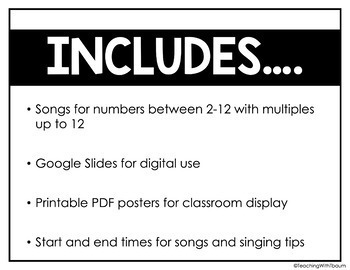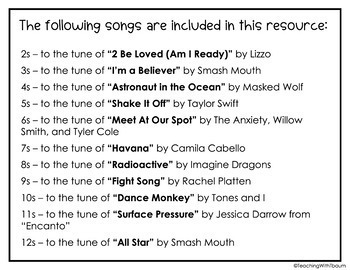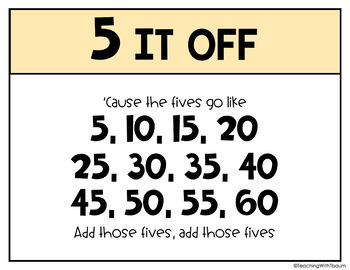Multiplication Skip Counting Songs 2-12 (Pastel Colors)
- Google Slides™

What educators are saying
Description
Need a fun way to teach students their skip counting facts? Use this resource to help your students learn multiplication to today's top hits!
This resource includes songs and posters for multiples of numbers 2-12. You can use the Google Slides to teach one song at a time. You can also print out posters of the songs to display in your classroom. Included also are singing tips and music start and stop times.
Includes:
2s – to the tune of “2 Be Loved (Am I Ready)” by Lizzo
3s – to the tune of “I’m a Believer” by Smash Mouth
4s – to the tune of “Astronaut in the Ocean” by Masked Wolf
5s – to the tune of “Shake It Off” by Taylor Swift
6s – to the tune of “Meet At Our Spot” by The Anxiety, Willow Smith, and Tyler Cole
7s – to the tune of “Havana” by Camila Cabello
8s – to the tune of “Radioactive” by Imagine Dragons
9s – to the tune of “Fight Song” by Rachel Platten
10s – to the tune of “Dance Monkey” by Tones and I
11s – to the tune of “Surface Pressure” by Jessica Darrow from “Encanto”
12s – to the tune of “All Star” by Smash Mouth





